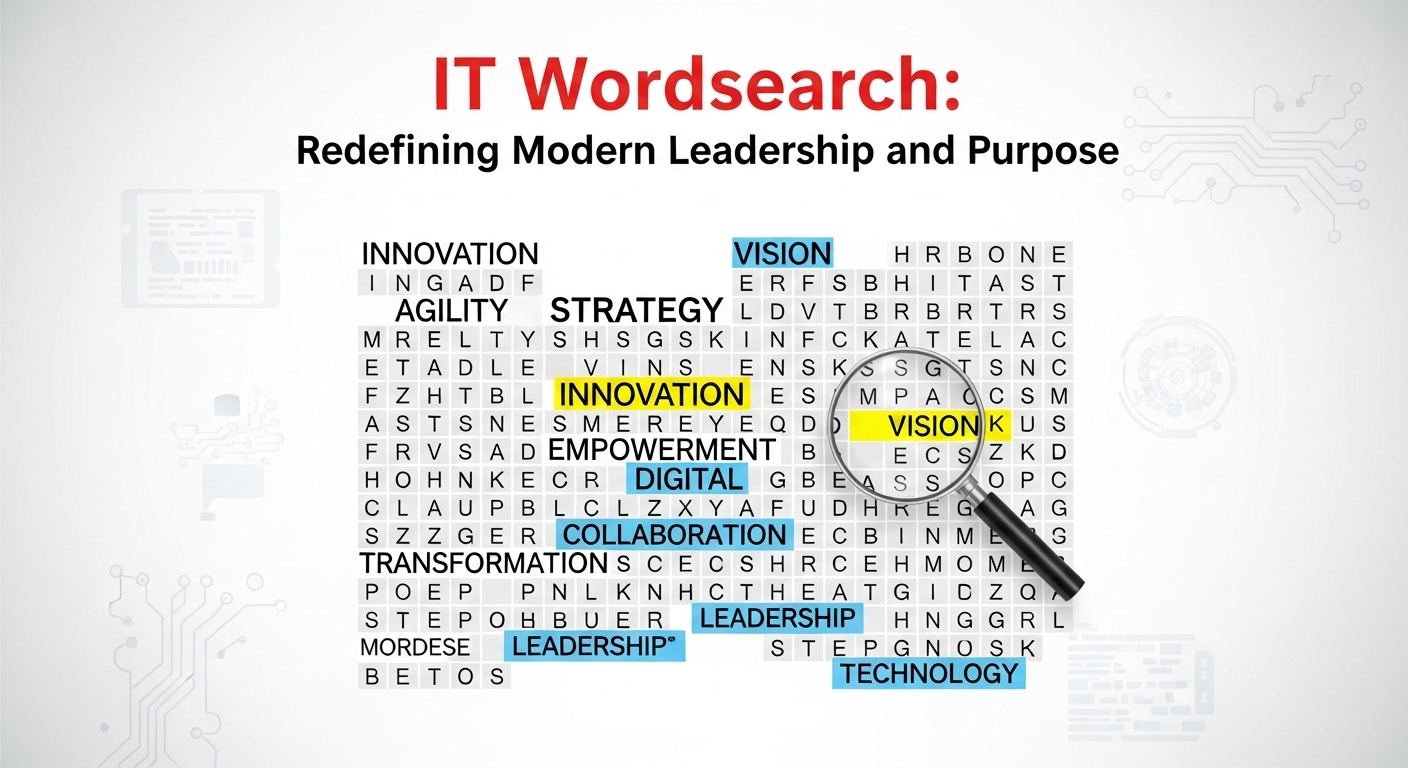BUSINESS
How Agencies Help B2B SaaS Companies Scale Marketing Without a Full Team

B2B SaaS companies face a unique set of challenges when it comes to marketing. The highly competitive landscape, complex products, and long sales cycles often mean that a strategic, well-executed marketing plan is essential for growth. However, for many SaaS companies, especially startups and growing businesses, the cost and effort of building a full, in-house marketing team can be overwhelming.
In this article, we’ll explore how working with a marketing agency can help B2B SaaS companies overcome these challenges, scale their efforts, and compete effectively—without needing to hire a large team internally.
The Key Marketing Challenges for B2B SaaS Companies
Before diving into the benefits of using an agency, it’s worth understanding the primary marketing challenges that B2B SaaS companies face:
Long Sales Cycles
The decision-making process for B2B SaaS purchases can be lengthy and complex. Buyers often require multiple touchpoints—such as demos, content engagement, and case studies—before committing to a purchase. Marketing teams need to nurture leads over time, which can be resource-intensive.
Complex Products
B2B SaaS products often solve intricate problems and require a deep understanding of the industry and customer pain points. Explaining the value of these products can be a challenge, especially if the product’s benefits aren’t immediately apparent to the buyer. This requires specialised content and clear communication.
High Competition
The SaaS market is incredibly competitive, with thousands of companies vying for the same audience. Standing out requires more than just a great product; it requires a clear brand identity, a strong content strategy, and effective digital campaigns.
Limited Resources
Many B2B SaaS companies, especially smaller ones, lack the resources to hire a full marketing team. Hiring in-house experts in content creation, SEO, paid advertising, and lead generation can be expensive and time-consuming.
How Agencies Solve These Challenges
Rather than building a full marketing team from scratch, many B2B SaaS companies choose to work with an external marketing agency. By doing so, they gain access to a team of experts who can manage and execute marketing strategies, often at a fraction of the cost of hiring in-house. Whether you’re seeking specialised content creation, SEO support, or even looking to partner with an SEO Institute for advanced training and techniques, agencies can provide the necessary resources and expertise to help your business grow. Here’s how agencies help SaaS companies overcome key marketing challenges:
1. Access to Expertise
Agencies bring a wealth of specialised knowledge across all areas of marketing. From SEO and content creation to paid advertising and lead generation, agencies are made up of professionals who are well-versed in the latest tools and strategies.
For B2B SaaS companies with complex products, agencies can provide the necessary expertise to communicate the value of the product effectively. They know how to craft targeted messaging, create educational content, and run campaigns that attract qualified leads. By working with an agency, SaaS companies can tap into expert knowledge without needing to hire a diverse in-house team.
2. Scalability and Flexibility
One of the biggest advantages of working with a marketing agency is scalability. As your business grows, your marketing needs will evolve, and an agency can easily adapt to these changes. Whether you need to ramp up lead generation, expand your content strategy, or focus on a new market, agencies have the flexibility to adjust their efforts to match your goals.
Agencies also offer the ability to scale services up or down depending on your budget and requirements. This is especially useful for growing companies that may not have the financial resources to hire full-time employees but still need to maintain a competitive marketing presence.
3. Cost-Effectiveness
Hiring an in-house marketing team requires significant investment—not just in salaries, but also in recruitment, training, and tools. Agencies provide an affordable alternative by offering comprehensive marketing services for a set fee or retainer.
For B2B SaaS companies that are mindful of their budget, agencies can provide expert support at a fraction of the cost of hiring full-time employees. This allows companies to invest their resources more efficiently, focusing on product development or customer service while still maintaining an effective marketing strategy.
4. Quick Execution
In-house marketing teams often take time to recruit, train, and align with company goals. When working with an agency, the onboarding process is much quicker, as agencies are already equipped with the skills and tools needed to hit the ground running.
For B2B SaaS companies, time is often of the essence, especially when there are opportunities to capture market share or respond to competitor actions. Agencies are experienced in launching campaigns quickly, ensuring that your marketing efforts remain timely and relevant.
5. Focus on Core Competencies
SaaS companies often have limited resources, and leadership teams are usually focused on product development, customer service, and business growth. By outsourcing marketing efforts to an agency, these companies can focus on what they do best—building and improving their product—while the agency handles lead generation, brand awareness, and digital strategies.
This division of labour ensures that the company’s marketing is in expert hands while internal teams remain focused on delivering a high-quality product to their customers.
Key Services Agencies Offer for B2B SaaS Marketing
When working with a marketing agency, B2B SaaS companies can benefit from a range of services tailored to their needs. Here are some of the key services that agencies typically provide:
1. Content Marketing and SEO
Agencies can help SaaS companies develop and implement a content marketing strategy that attracts, engages, and converts leads. This often includes creating blog posts, whitepapers, case studies, and video content that address the pain points of the target audience.
Agencies also ensure that content is optimised for search engines, helping SaaS companies rank for important industry keywords. By improving their organic search presence, B2B SaaS companies can generate consistent, high-quality traffic to their website.
2. Paid Advertising (PPC)
Agencies are experts in managing pay-per-click (PPC) campaigns on platforms like Google Ads, LinkedIn, and Facebook. They can develop targeted campaigns that deliver immediate results, driving qualified leads to your website and helping you achieve a positive return on investment (ROI).
For B2B SaaS companies, paid ads can be especially effective for driving traffic to product demos, free trials, and gated content like whitepapers or webinars.
3. Lead Nurturing and Automation
Lead nurturing is essential for B2B SaaS companies with longer sales cycles. Agencies can help set up automated email sequences and workflows that engage prospects over time, gradually building trust and encouraging them to move through the sales funnel.
With tools like HubSpot, Marketo, or Pardot, agencies can also segment leads and create personalised marketing efforts based on customer behaviour, ensuring that potential buyers receive relevant and timely messages.
4. Data Analysis and Optimisation
Effective marketing requires constant optimisation. Agencies are skilled at analysing campaign performance, identifying areas for improvement, and making data-driven adjustments. This helps ensure that SaaS companies are getting the best possible results from their marketing efforts and maximising their budget.
By partnering with an agency, SaaS companies can be confident that their marketing strategy is always optimised for the highest impact.
Conclusion
B2B SaaS marketing presents unique challenges, from long sales cycles and complex products to limited resources and intense competition. However, by partnering with a marketing agency, SaaS companies can overcome these obstacles and scale their efforts effectively without the need for a full in-house team.
Agencies bring a wealth of expertise, cost-efficiency, and scalability to the table, helping B2B SaaS companies build strong, effective marketing strategies that drive growth. By focusing on their core competencies and outsourcing marketing to experienced professionals, SaaS companies can continue to innovate and deliver value to their customers.
If you’re looking for support with B2B SaaS marketing, consider partnering with an agency to help streamline your marketing efforts and achieve sustainable growth.
BUSINESS
Common Legal Issues in Residential Real Estate and How to Address Them

Navigating residential real estate transactions can involve various legal challenges that homeowners and buyers should be aware of. Common issues include unclear property titles, zoning disputes, boundary disagreements, and contract misunderstandings. Addressing these matters proactively can prevent costly delays and protect all parties involved. Understanding the basics of real estate law helps individuals recognize potential pitfalls before they escalate into serious problems.
Engaging with professionals knowledgeable in real estate law can guide you in drafting contracts, resolving disputes, and ensuring compliance with local regulations. By seeking informed advice early, homeowners and buyers can reduce risk, streamline transactions, and safeguard their investments. Awareness and preparation are key to handling legal complexities effectively while maintaining confidence throughout the buying or selling process.
Title and Deed Fraud
Title fraud is a significant issue in which criminals transfer property ownership illegally by forging signatures or using other fraudulent means. This not only compromises ownership but may also leave you liable for debts or liens tied to your property. To protect your home, periodically monitor the status of your property title and consider using title lock services that can notify you of any unauthorized changes to your title. Title insurance, which most lenders require, also provides a crucial layer of protection for homeowners.
Undisclosed Property Defects
When selling property, sellers are legally obligated to disclose any known issues; however, some defects may remain hidden until after the sale has been completed. Commonly undisclosed issues include water damage, faulty wiring, and past pest infestations, which can result in significant costs for buyers. Buyers must conduct a thorough home inspection and scrutinize disclosure forms, maintaining clear communication with inspectors to document potential issues. If defects arise after the sale, buyers may have legal avenues for compensation or to rescind the contract.
Breach of Contract
Residential real estate deals are governed by contracts detailing every aspect of the transaction, from price and contingencies to required repairs and closing dates. Breaches can occur if any party fails to meet their obligations, for instance, by not repairing a leaky roof as promised or missing crucial deadlines. Preventing breaches begins with clear and precise language in contracts and diligent communication among all parties. Understanding residential real estate law is essential, as it provides the framework for enforcing agreements and resolving disputes. In the event of a potential contract violation, consulting with a real estate attorney can help explore remedies such as mediation, renegotiation, or pursuing damages through legal channels.
Financing and Mortgage Issues
Financing problems or misconceptions about mortgages, such as loan denials after an offer, misunderstandings about interest rates, and mistakes in documentation, can make a real estate transaction difficult. Before closing, buyers should maintain good credit, avoid making significant financial changes, and thoroughly understand their loan terms and conditions. To mitigate risks and prevent unforeseen issues, it is crucial to maintain open lines of communication with lenders, including documenting all conversations.
Zoning and Land Use Restrictions
Zoning laws regulate the use of properties, including structures, businesses, and fences. Ignoring local ordinances can lead to legal issues or the removal of modifications. Check the regulations on your city or county website and consult with planning officials before making changes to ensure compliance and avoid costly errors.
Homeowners Association (HOA) Disputes
Neighborhoods governed by HOAs come with additional rules and responsibilities. Disputes over landscaping, parking, noise, or architectural changes are common and can lead to fines or legal conflicts if not handled carefully. Before committing to a property in a managed community, scrutinize the HOA’s covenants, conditions, and restrictions (CC&Rs), and attend community meetings if possible. If you find yourself facing a dispute, approach your HOA board promptly and maintain a documented record of correspondence to facilitate quick and amicable resolutions.
Boundary and Survey Disputes
Accurate boundary identification is crucial for maintaining peaceful neighbor relationships and facilitating future transactions. Disputes may arise from misinterpreted property lines, encroachments, or unclear lot descriptions. Buyers should always order a fresh professional survey before closing and review all records for discrepancies. Resolving boundary disagreements amicably is ideal, but legal recourse may be necessary if talks fail. County assessor offices and historical deed records often provide valuable documentation during such disputes.
Conclusion
By proactively identifying and addressing these common legal issues in residential real estate, you reduce the likelihood of disputes and financial setbacks. Relying on professionals, including attorneys, inspectors, and local government officials, is crucial to navigating the process safely. Make informed decisions, keep diligent records, and stay current with your obligations to ensure a successful and secure real estate experience.
BUSINESS
The Power of Peace of Mind: Why Insurance Is an Investment, Not an Expense

Understanding Insurance as an Investment
Understanding insurance as an investment means recognizing that certain policies serve a dual purpose: offering financial protection and building long-term value. Unlike savings accounts, these policies create a safety net and accumulate cash value, like life insurance growing through interest or dividends, providing coverage and wealth buildup. Viewing insurance this way helps individuals choose policies aligned with their financial goals and risk tolerance. Even standard policies, such as auto insurance, contribute to financial planning by covering damages and liabilities, preventing major expenses that could affect budgets or investments. Recognizing insurance’s dual role as protection and potential investment allows for better financial stability and peace of mind.
Major Types of Insurance and Their Benefits
Each insurance type serves a specific purpose. Health insurance covers unexpected illnesses, providing lifesaving care when needed. Property and homeowner’s insurance help rebuild after fires or storms. Auto coverage protects your vehicle and passengers and fulfills legal requirements, shielding parties from losses. Policies can be customized with add-ons like identity theft or bundling car, house, or business liabilities to suit your needs. Home insurance is essential for homeowners, protecting against weather damage, theft, and liability, so you can rest easy. The right coverage considers your assets, lifestyle, and goals, building a safety net. When choosing insurance, look beyond premiums to the long-term impact of coverage.
The Economic Impact of Insurance on Communities
Insurance isn’t just about individual peace of mind; it fortifies entire communities. When people and businesses insure their property, health, and liabilities, they’re more likely to innovate, expand, and support local economies without the threat of catastrophic loss holding them back. In times of crisis, insurance payouts for rebuilding and recovery help stabilize neighborhoods and reduce the strain on public resources.
Economists have observed for a long time that insurance significantly supports entrepreneurship and investment in new ventures. Industries with good coverage tend to withstand economic downturns better and recover more quickly from unexpected shocks. Without the reassurance provided by insurance, growth and innovation would slow down considerably, and the potential risks might prevent significant advancements.
Integrating Insurance into Long-Term Financial Planning
Insurance should be a pillar of any sound financial plan. Start by assessing which risks could cause serious setbacks and match coverage types to those needs. For example, young families often prioritize life insurance for security, while property owners focus on home protection. Consistently reviewing policies ensures your protection evolves along with life changes, from family milestones to new business ventures.
Smart policyholders treat premiums as contributions toward future security—much like retirement savings or investments in education. This proactive mindset isn’t about compliance or mere obligation; it’s about wisely positioning yourself and your loved ones to weather whatever comes, while supporting the stability and prosperity of your broader community.
Conclusion
In today’s unpredictable world, the value of insurance extends far beyond a monthly bill. It is a critical investment, weaving together individual peace of mind with the collective strength of families, homeowners, and business owners. By embracing insurance as a strategic tool rather than an expense, you empower yourself to pursue your dreams and build a future fortified against life’s uncertainties.
Building your protection strategy now lays the groundwork for confidence, stability, and security—qualities that enrich not only your own life but also the broader community and economy. Make insurance a purposeful component of your financial plan and experience the freedom that comes from true peace of mind.
BUSINESS
IT Wordsearch: Redefining Modern Leadership and Purpose

In today’s rapidly evolving world, leadership is no longer defined solely by financial success or corporate expansion. The most influential leaders are those who integrate business excellence with social responsibility, building organizations that thrive while uplifting communities. One such emerging perspective in this landscape is IT wordsearch—a concept that symbolizes the search for meaning, alignment, and innovation in modern leadership.
This article explores how IT wordsearch represents more than a puzzle-like curiosity. It reflects a deeper leadership journey—one where purpose and performance align, where success is measured not only in profits but also in people, culture, and long-term impact.
What is IT Wordsearch?
At first glance, it wordsearch may sound like a simple activity: finding hidden words within a grid. Yet when applied to leadership and business, the phrase takes on a symbolic meaning. It suggests a process of discovery, alignment, and focus. Just as players search for hidden words, leaders must search for solutions, values, and strategies hidden within the complexity of today’s global challenges.
The idea resonates with professionals who believe that economic growth and positive social change are not mutually exclusive but deeply interconnected. Much like solving a wordsearch, success lies in recognizing patterns, connecting dots, and uncovering possibilities others may overlook.
A Leadership Philosophy Rooted in Discovery
At the heart of the it wordsearch philosophy is the belief that leadership is a continuous search for purpose. This approach emphasizes three core values:
- Empathy in leadership: Understanding the human side of business, from employees to customers.
- Sustainability: Ensuring long-term growth by balancing profitability with environmental and social responsibility.
- Collaboration: Building partnerships that amplify both business outcomes and community well-being.
This framework reflects a growing awareness that modern organizations do not exist in isolation. They are part of larger ecosystems where every decision has ripple effects. Leaders who embrace the it wordsearch mindset don’t just chase immediate wins—they uncover deeper value that sustains both business and society.
Bridging Business Growth with Social Impact
What makes the it wordsearch approach so powerful is its ability to link corporate success with community impact. Much like finding words hidden within a grid, leaders must look beyond the obvious to discover opportunities for shared growth.
Examples of this approach include:
- Workplace Culture: Designing inclusive, supportive environments that attract and retain diverse talent.
- Community Investment: Reinvesting resources into education, local initiatives, and social programs before they become urgent needs.
- Innovation for Good: Using technology to solve pressing challenges, from environmental sustainability to equitable access to services.
When these values are embedded into strategy, businesses create a virtuous cycle: strong companies nurture stronger communities, which in turn sustain future growth.
Influence in the Digital Age
The digital landscape has amplified the importance of acting with foresight. Just as a wordsearch reveals hidden connections, the digital world reveals opportunities for influence and innovation. Leaders today use platforms not only for visibility but also to inspire movements and conversations around responsible practices.
With it wordsearch as a guiding principle, leaders leverage digital tools to:
- Reach broad audiences with authentic messages.
- Engage younger generations who value transparency and inclusion.
- Inspire peers to adopt purpose-driven strategies.
In this sense, digital influence is no longer about self-promotion—it is about amplifying messages that shape industries and communities alike.
A Model for the Next Generation
The rise of it wordsearch as a metaphor for leadership aligns closely with the values of Millennials and Gen Z. Younger professionals increasingly seek role models who:
- Live authentically, aligning values with action.
- Promote diversity and equity, not as an afterthought but as a foundation.
- Think globally, addressing interconnected challenges such as climate change, inequality, and digital ethics.
These expectations highlight why it wordsearch resonates—it symbolizes the search for alignment in an often disjointed world. By embodying these principles, leaders position themselves not just as executives but as mentors and trailblazers.
Challenges in the Search
Like solving a difficult puzzle, applying the it wordsearch philosophy is not without challenges. Leaders face:
- Balancing short-term pressures with long-term commitments to purpose.
- Convincing traditional stakeholders of the measurable value of social responsibility.
- Navigating uncertainty in rapidly changing markets and technologies.
However, these challenges are also opportunities. Much like hidden words, solutions often lie just beneath the surface. Leaders who embrace curiosity and adaptability can turn obstacles into breakthroughs.
Why the Wordsearch Metaphor Matters
The metaphor of it wordsearch matters because it reflects the complexity of modern leadership. Success isn’t about finding a single answer; it’s about uncovering many interconnected solutions. A leader who can anticipate challenges, spot hidden opportunities, and align strategy with purpose is far better equipped to guide organizations through uncertainty.
This proactive mindset is essential in a world where reactive leadership often falls short. Waiting until challenges dominate headlines is too late. By searching for solutions early—before they are visible to all—leaders create lasting resilience.
Looking Ahead
As leadership continues to evolve, it wordsearch represents more than a clever metaphor. It is a call to action: to search for meaning, embrace complexity, and discover opportunities before they become urgent.
In a world where consumers, employees, and investors increasingly demand accountability, the leaders who succeed will be those who treat every challenge like a wordsearch puzzle—hidden with possibilities waiting to be uncovered.
The future belongs to leaders who see beyond profits, who connect performance with purpose, and who embrace the ongoing search for what truly matters. In the end, the most powerful leaders are those who uncover meaning not after the fact, but during the process—just as one finds words hidden in a puzzle grid.
-

 HEALTH2 years ago
HEALTH2 years agoIntegrating Semaglutide into Your Weight Loss Plan: A Practical Guide
-

 HOME IMPROVEMENT2 years ago
HOME IMPROVEMENT2 years agoHow to Choose the Perfect Neutral Area Rug for Every Room
-

 LAW1 year ago
LAW1 year agoTeenage Drivers and Car Accidents in California: Risks and Parental Liability
-

 CONSTRUCTION1 year ago
CONSTRUCTION1 year agoConstruction Site Safety Regulations in New York and Your Rights as a Worker
-

 LAW1 year ago
LAW1 year agoPost-Divorce Considerations in California: Modifications and Long-Term Planning
-

 HOME2 years ago
HOME2 years agoSandra Orlow: The Teen Model Who Captivated the Internet
-

 FINANCE1 year ago
FINANCE1 year agoDigital Asset Management in Florida Estate Planning
-

 FASHION2 years ago
FASHION2 years ago7 Celebrity-Inspired Elegant Summer Dresses For 2024
